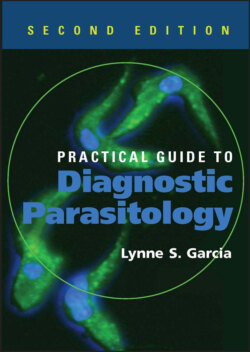Читать книгу Practical Guide to Diagnostic Parasitology - Lynne Shore Garcia - Страница 52
На сайте Литреса книга снята с продажи.
Microsporidia
ОглавлениеCurrently, the most difficult intestinal protozoa to diagnose are the microsporidia (size range, 1 to 2.5 μm); the development of molecular biology-based methods should provide more specific and sensitive methods. These organisms have also been documented to disseminate from the intestinal tract to other body sites, including the kidneys and lungs. Routine parasitology stains are not useful; modified trichrome stains have been developed specifically for these organisms. Compared with the more common Wheatley’s trichrome for routine stool staining, the modified trichrome stain contains a 10-fold higher concentration of the main dye, chromotrope 2R. The infective form is called the spore; each spore contains a polar tubule that is used to penetrate new host cells, thus initiating or continuing the life cycle. Infections are acquired through ingestion, inhalation, or direct inoculation of spores from the environment. Currently at least two genera have been documented to cause human infection in the intestinal tract (Encephalitozoon intestinalis and Enterocytozoon bieneusi).
